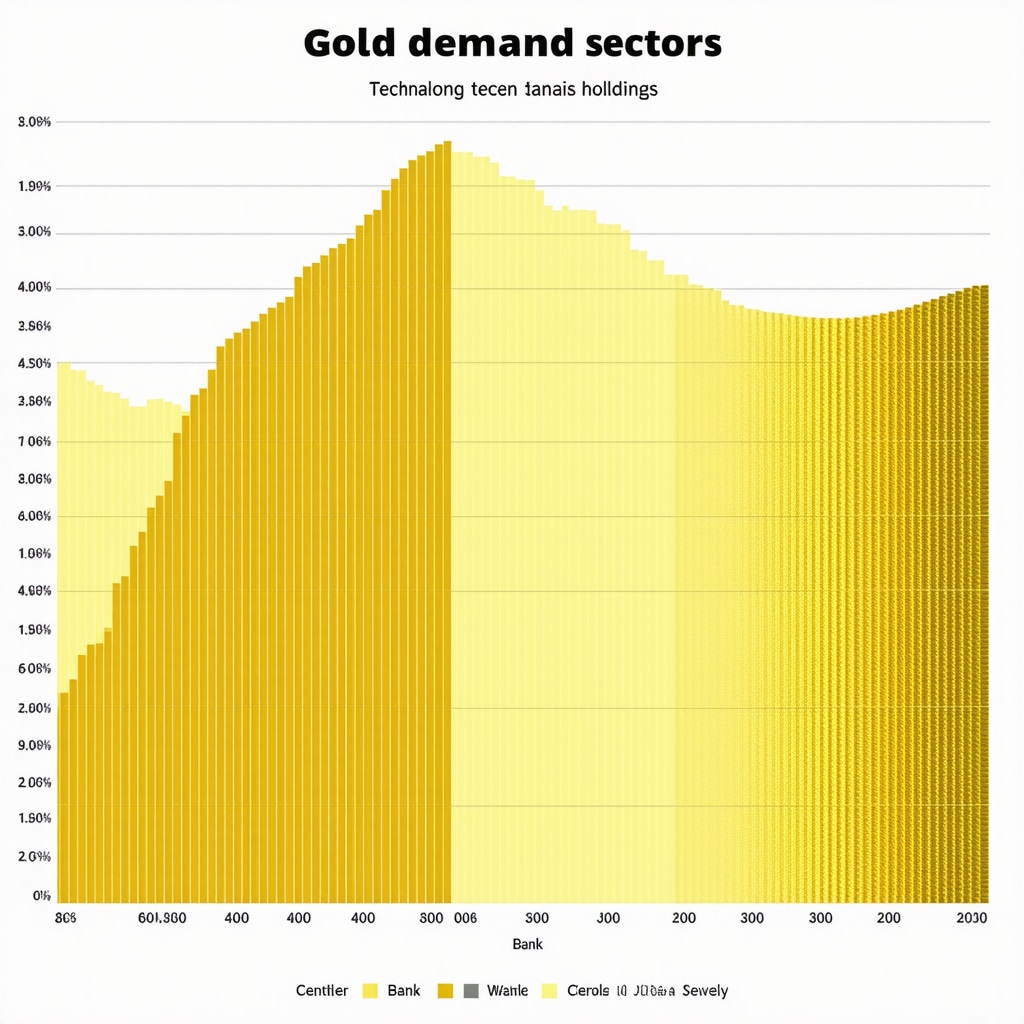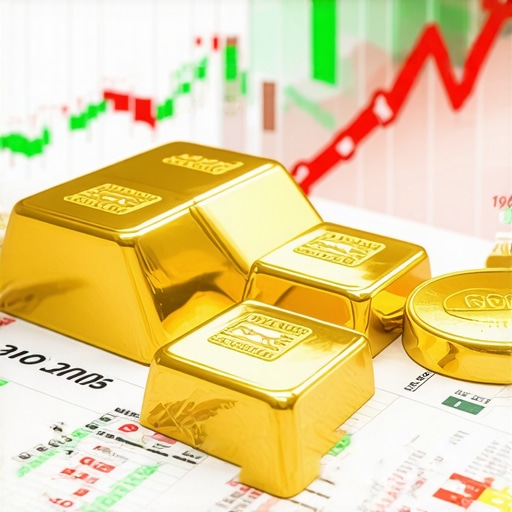Understanding the Dynamics of Global Gold Demand and Its Strategic Implications for 2025
As financial markets evolve amidst geopolitical tensions, technological advancements, and shifting monetary policies, the demand for gold emerges as a critical indicator of economic resilience and investor sentiment. Expert analysts emphasize that deciphering the nuanced patterns of gold demand across various sectors provides invaluable insights into future price trajectories and investment opportunities.
The Multifaceted Nature of Gold Demand: Industry, Consumer, and Institutional Forces
Gold’s demand landscape is shaped by an intricate interplay of industry-specific factors, consumer preferences, and institutional policies. For instance, jewelry and technology sectors continue to drive consumer demand, while central banks’ reserve management strategies influence institutional holdings. Notably, the mining industry’s supply constraints and exploration trends further modulate the supply-side dynamics. Understanding Gold Demand Trends and Consumer Industry Impact offers an in-depth analysis of these variables.
How will emerging technological innovations and geopolitical shifts shape gold’s demand in 2025?
Technological innovations, such as increased use of gold in electronics and renewable energy sectors, are expected to bolster industrial demand. Simultaneously, geopolitical tensions and economic uncertainties may heighten safe-haven buying, leading to increased central bank purchases and investor allocations. The evolving landscape underscores the importance of monitoring supply-demand imbalances and policy shifts that could intensify price volatility or stability.
For investors aiming to navigate this complex environment, understanding supply-demand fundamentals is crucial. Exploring options such as gold ETFs and mutual funds can offer diversification and liquidity benefits in uncertain times.
Moreover, the impact of central bank gold purchases on market prices remains a debated topic among experts. According to recent analyses, increased central bank buying has historically been associated with upward price pressures, yet the timing and scale of such interventions vary significantly. Staying abreast of these trends can inform strategic entry and exit points for investors.
Expert Insights on Gold Market Analysis and Investment Strategies for 2025
Informed by comprehensive market analysis, industry leaders recommend a balanced approach that incorporates physical gold holdings, futures trading, and diversified exposure through ETFs. This multi-pronged strategy aims to hedge against inflation, currency fluctuations, and geopolitical risks—factors that are poised to dominate the 2025 investment climate.
To deepen your understanding, consider exploring gold market analysis and key trends for 2025. Staying ahead requires a nuanced grasp of economic indicators, supply chain developments, and policy shifts that influence gold’s trajectory.
In conclusion, the confluence of supply-demand dynamics, technological progress, and geopolitical considerations will define gold’s role in the global economy in 2025. Harnessing expert insights and analytical tools is essential for investors seeking to capitalize on emerging opportunities and mitigate risks.
Innovative Factors Shaping Gold Demand and Investment Opportunities in 2025
As we look toward 2025, understanding how emerging technological trends and geopolitical developments will influence gold’s demand becomes increasingly vital for investors. The integration of blockchain technology, advancements in electronics, and the push for renewable energy solutions are expanding gold’s industrial applications, potentially boosting its price stability and growth prospects. Simultaneously, geopolitical tensions and economic uncertainties continue to drive safe-haven investments, prompting central banks and institutional investors to adjust their holdings accordingly. Understanding Gold Demand Trends and Consumer Industry Impact provides a comprehensive analysis of these multifaceted influences.
What strategic insights can investors leverage from the intersection of technological innovations and geopolitical shifts in 2025?
By closely monitoring supply-demand imbalances, emerging industrial uses, and policy responses, investors can better anticipate price movements. For example, the increasing use of gold in electronics and renewable energy sectors, such as solar panels and electric vehicle components, signals a sustained industrial demand that may support prices even amid market volatility. On the geopolitical front, heightened tensions often result in increased central bank gold purchases, which historically have exerted upward pressure on prices. Staying informed through expert analyses, like those found at best gold ETFs and mutual funds for 2025, can help investors develop resilient portfolios that capitalize on these trends.
Advanced Analytical Frameworks to Decode Gold Market Movements in 2025
Utilizing sophisticated tools such as supply-demand modeling, macroeconomic indicator analysis, and geopolitical risk assessments can significantly enhance investment decision-making. Experts advise integrating data from gold market analysis and key trends for 2025 to identify emerging patterns and potential turning points. These frameworks enable investors to differentiate between short-term volatility and long-term growth signals, optimizing entry and exit strategies. Furthermore, understanding the role of central banks in gold market dynamics, as detailed in central bank gold purchases and price trends, adds a layer of strategic depth to portfolio management.

How can a nuanced understanding of supply-demand fundamentals and technological shifts empower investors in 2025?
By synthesizing data on industry consumption, consumer preferences, and institutional reserve strategies, investors can craft more informed and adaptable investment plans. For instance, diversifying holdings through physical gold, ETFs, and mining stocks—each influenced differently by supply-demand dynamics—can mitigate risks and enhance returns. Exploring the latest trends in gold coins and bullion options for 2025 can also identify opportunities for wealth preservation and growth. Staying ahead requires continuous learning and strategic agility, particularly as technological and geopolitical landscapes evolve rapidly.
For those interested in a comprehensive starting point, the guide at investing in gold for beginners offers practical insights to build a resilient investment foundation for 2025 and beyond.
The Role of Technological Innovation and Geopolitical Shifts in Shaping Gold Demand in 2025
As we venture further into 2025, the landscape of gold demand is becoming increasingly complex, driven by rapid technological advancements and ongoing geopolitical tensions. Experts highlight that the integration of gold into emerging sectors such as blockchain, electric vehicle batteries, and renewable energy systems is not only expanding industrial applications but also stabilizing prices through diversified demand channels. Conversely, geopolitical conflicts and policy uncertainties continue to fuel safe-haven investments, compelling central banks and institutional investors to adjust their holdings dynamically.
In-depth analysis by the World Gold Council underscores that technological progress, particularly in electronics and green energy technologies, is elevating gold’s industrial significance. Simultaneously, geopolitical tensions, especially involving major economies, lead to increased central bank gold purchases as a strategic reserve asset, exerting upward pressure on prices. Navigating these competing forces requires a nuanced understanding of supply-demand fundamentals, macroeconomic indicators, and policy responses that influence market trajectories.
How can investors leverage technological trends and geopolitical developments to optimize gold investments in 2025?
By maintaining vigilant monitoring of industrial consumption patterns, policy shifts, and geopolitical risk assessments, investors can better anticipate price movements. For example, the rising use of gold in solar panels and electric vehicle components signifies sustained industrial demand, which can support prices even amid volatility. Furthermore, geopolitical conflicts tend to trigger central bank gold purchases, historically acting as price catalysts. Staying informed via expert analyses such as those available at best gold ETFs and mutual funds for 2025 enables investors to develop resilient, adaptive portfolios that capitalize on these trends.
Additionally, understanding the broader macroeconomic environment, including inflation rates, currency fluctuations, and monetary policies, is vital to contextualize these demand shifts. This comprehensive approach ensures that investments are strategically aligned with emerging market realities, thereby enhancing potential returns while mitigating risks.
Advanced Analytical Frameworks for Decoding Gold Market Behavior in 2025
To navigate the intricate dynamics of gold prices, investors are increasingly turning to sophisticated analytical tools. Supply-demand modeling, macroeconomic indicator analysis, and geopolitical risk assessments form the backbone of a comprehensive investment strategy. For instance, integrating data from sources like gold market analysis for 2025 allows for the identification of emerging patterns and potential inflection points.
Such frameworks empower investors to differentiate between short-term volatility caused by geopolitical shocks or macroeconomic fluctuations and long-term growth signals driven by fundamental supply-demand imbalances. Moreover, understanding central bank behaviors—especially their strategic gold reserves—adds a layer of depth, enabling more precise timing of entry and exit points. Expert insights suggest that combining quantitative models with qualitative geopolitical assessments creates a robust decision-making process that can adapt to rapidly evolving market conditions.

How does a nuanced understanding of supply-demand fundamentals and technological shifts enhance strategic investment planning in 2025?
By synthesizing detailed data on industry consumption, consumer preferences, and institutional reserve strategies, investors can build diversified portfolios that hedge against specific risks. For example, physical gold holdings may serve as a safe haven during periods of geopolitical tension, while ETFs and mining stocks can offer exposure to industrial demand growth. Exploring the latest options in gold coins and bullion for 2025 further enhances wealth preservation strategies.
Continuous learning and agility are paramount, especially in a landscape characterized by rapid technological evolution and geopolitical volatility. Engaging with expert analyses, market reports, and emerging data sources ensures that investors remain well-informed and capable of adjusting their strategies proactively. Ultimately, a comprehensive understanding of these multifaceted drivers fosters more resilient and profitable investment approaches in 2025 and beyond.
Unveiling the Hidden Drivers of Gold’s Resurgence in 2025
As we delve deeper into the evolving landscape of precious metals, it becomes evident that technological innovation and geopolitical dynamics are intricately linked to gold’s future trajectory. The integration of blockchain technology, advancements in electronics, and green energy initiatives are expanding gold’s industrial applications, creating new demand channels that could stabilize prices amid market fluctuations.
How Will Geopolitical Tensions and Technological Progress Interact to Shape Gold Markets?
Geopolitical tensions, especially among major economies, often trigger central bank gold purchases as a strategic reserve measure, exerting upward pressure on prices. Simultaneously, technological advancements, such as increased use of gold in electric vehicle batteries and solar panels, bolster industrial demand. According to the World Gold Council, these dual forces create a complex but promising environment for investors seeking resilience and growth opportunities.
What Expert Strategies Can Maximize Gold Investment Returns in This Multi-Faceted Environment?
Investors should focus on a diversified portfolio that includes physical gold, ETFs, and mining stocks, each responding differently to supply-demand shifts. Staying informed through authoritative sources like the World Gold Council’s research and leveraging advanced analytical tools such as macroeconomic modeling and geopolitical risk assessments can enhance decision-making capabilities. Additionally, monitoring central bank reserve policies provides crucial insights into potential price movements.

Advanced Analytical Frameworks: The Key to Navigating 2025’s Gold Market
Utilizing sophisticated data analysis—combining supply-demand models, macroeconomic indicators, and geopolitical risk assessments—can identify emerging market trends and potential inflection points. Integrating data from sources like the World Gold Council’s market trends empowers investors to differentiate between short-term volatility and long-term growth signals, optimizing their entry and exit strategies.
How Can Deep Knowledge of Supply-Demand Fundamentals and Technological Shifts Transform Investment Approaches?
By synthesizing detailed insights on industry consumption, consumer preferences, and institutional reserve strategies, investors can craft resilient portfolios. For example, combining physical gold holdings with exposure to gold ETFs and mining stocks offers a strategic hedge against geopolitical and economic uncertainties. Exploring innovative investment options, such as gold-backed digital assets, can further diversify risk and capitalize on emerging trends.
Engaging with expert analyses and continuously updating market intelligence is essential for maintaining a competitive edge in this dynamic environment. For comprehensive guidance, consider resources like the Gold Investment Guide, which provides deep insights into strategic asset allocation in 2025 and beyond.
The Synergy of Innovation and Geopolitics: Shaping Gold’s Path Forward
Emerging sectors like blockchain, renewable energy, and electric vehicles are not only expanding gold’s industrial relevance but also reinforcing its role as a hedge against macroeconomic risks. Geopolitical conflicts, meanwhile, often catalyze central bank and institutional gold purchases, creating price support during turbulent times. Keeping abreast of these developments through expert analysis and strategic foresight is crucial for investors aiming to capitalize on these trends.
What Advanced Strategies Can Investors Employ to Leverage Technological and Political Shifts in Gold Markets?
Proactively monitoring supply-demand dynamics, policy shifts, and geopolitical risk factors allows for more precise timing and positioning. For instance, tracking technological adoption rates in green energy and electronics can signal sustained industrial demand, while geopolitical developments provide clues for safe-haven asset allocation. Leveraging analytical tools like scenario planning and stress testing can prepare investors for various market contingencies, ensuring resilient portfolios.
Engage with industry-leading research and participate in expert forums to continuously refine your investment approach, making data-driven decisions that align with the complex forces shaping gold’s future.
Expert Insights & Advanced Considerations
1. Diversify with Gold-Related Assets
Integrating physical gold, ETFs, and mining stocks into your portfolio enhances resilience against market volatility and inflation. Diversification allows you to capitalize on different demand drivers and risk profiles, ensuring steadier growth in uncertain economic climates.
2. Monitor Geopolitical and Technological Trends
Keeping abreast of geopolitical tensions and technological advancements—such as green energy and electronics—can provide early signals of shifts in industrial demand and safe-haven flows, guiding strategic entry and exit points.
3. Leverage Advanced Analytical Models
Employing supply-demand modeling, macroeconomic indicators, and geopolitical risk assessments offers a comprehensive framework for predicting price movements and identifying inflection points, essential for sophisticated investors.
4. Focus on Central Bank Policies
Tracking central bank gold purchases and reserve management strategies provides insights into potential market support levels and timing opportunities for portfolio adjustments.
5. Engage with Expert-Level Resources
Deepening your understanding through authoritative sources enhances strategic decision-making. Resources such as gold market analysis for 2025 and supply-demand insights are invaluable.
Curated Expert Resources
- Gold Market Analysis 2025: An authoritative overview of emerging trends, supply-demand dynamics, and economic influences shaping gold prices this year.
- Supply-Demand and Industry Impact Reports: In-depth analyses of how mining, consumer, and industrial sectors influence gold market movements.
- Central Bank Reserves and Policy Papers: Strategic insights into reserve management and policy shifts affecting gold valuation.
- Gold ETFs and Mutual Funds Guides: Practical resources for diversifying exposure with expert-backed recommendations for 2025.
Final Expert Perspective
Understanding the nuanced interplay of technological innovation, geopolitical shifts, and supply-demand fundamentals in the gold market is paramount for strategic positioning in 2025. A comprehensive approach—integrating advanced analytical tools, authoritative resources, and real-time policy tracking—empowers investors to navigate this complex landscape confidently. Engage with these insights and resources to refine your investment strategies, stay ahead of market trends, and secure your wealth against future uncertainties. For a deeper dive into these topics, explore the recommended resources and consider consulting with industry experts to tailor your investment approach.









